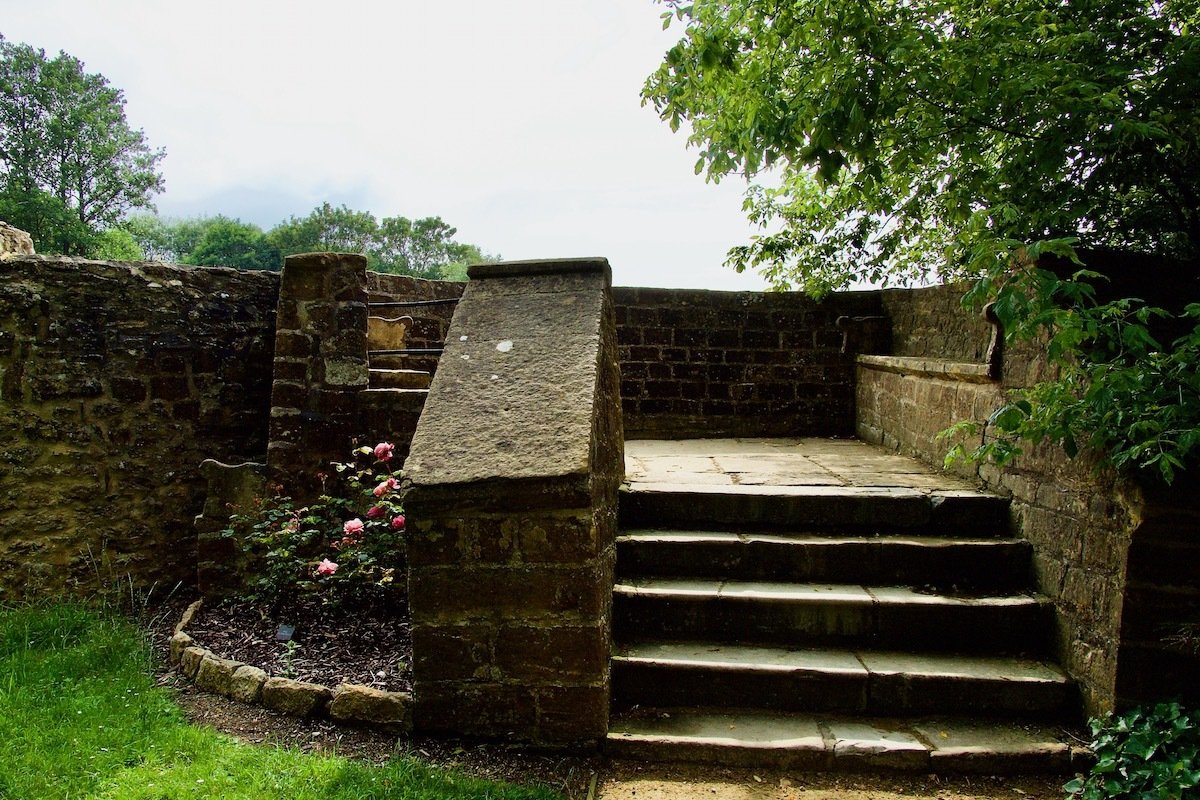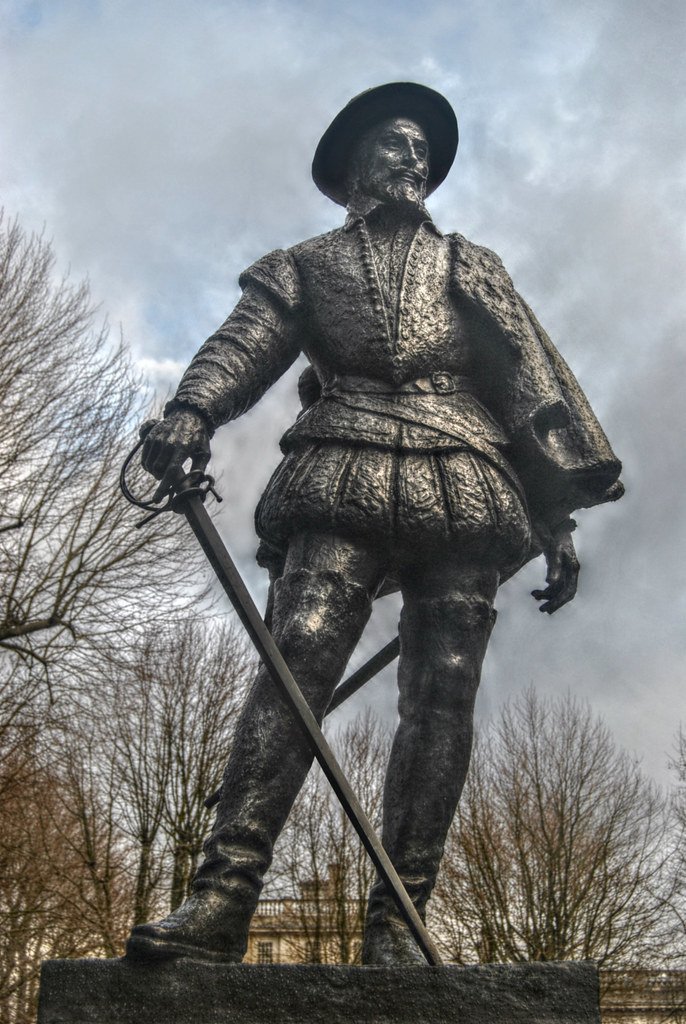
Sir Walter Raleigh was loved and hated by Queen Elizabeth I and despised by King James His own great passion, however, was for the Dorset town of Sherborne. He has left his mark on three of the town’s attractions: he lived in the two castles and he intervened in a dispute at the medieval St John’s Almshouses.
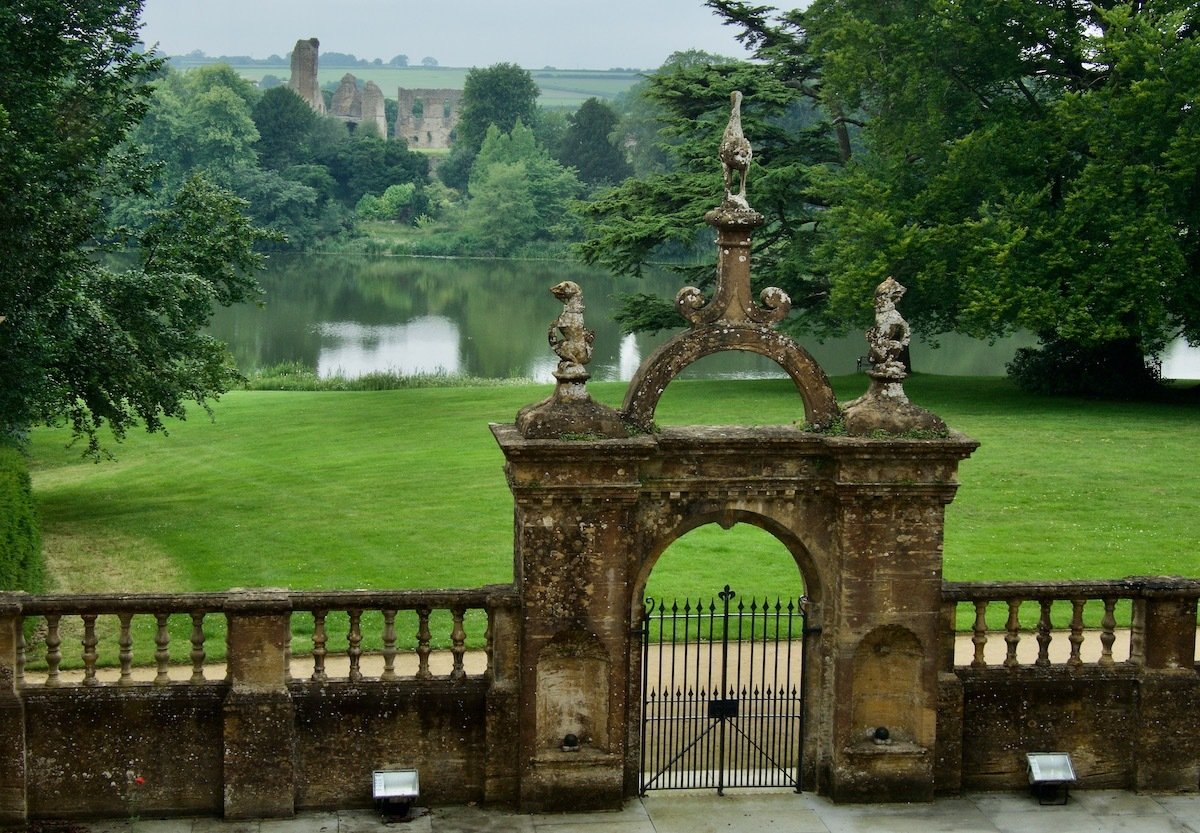
Old Sherborne Castle in Sherborne, Dorset
The ruins of the Old Castle of Sherborne top a gentle hill on the outskirts of the town. It was here that Roger de Caen, Bishop of Salisbury and Chancellor of England, built a fortified palace during the twelfth century. It was a magnificent building with four gate towers, an impressive banqueting hall and a drawbridge over a moat. No wonder it caught the eye of Sir Walter Raleigh as he rode by on his journeys between his family home in Devon and the royal court in London.
Raleigh was determined to have this castle but at the time it belonged to the Crown. Raleigh was a favourite of the reigning monarch Queen Elizabeth I, and flattery and jewellery helped him to acquire the castle in 1592. But soon after that his secret marriage to Bess Throckmorton, lady-in-waiting to Queen Elizabeth, became known: Raleigh had not sought the permission of his Queen, and in a jealous rage she treated both of them to a spell in the Tower of London, although it was not long before the Raleighs were released and could move to their new home.
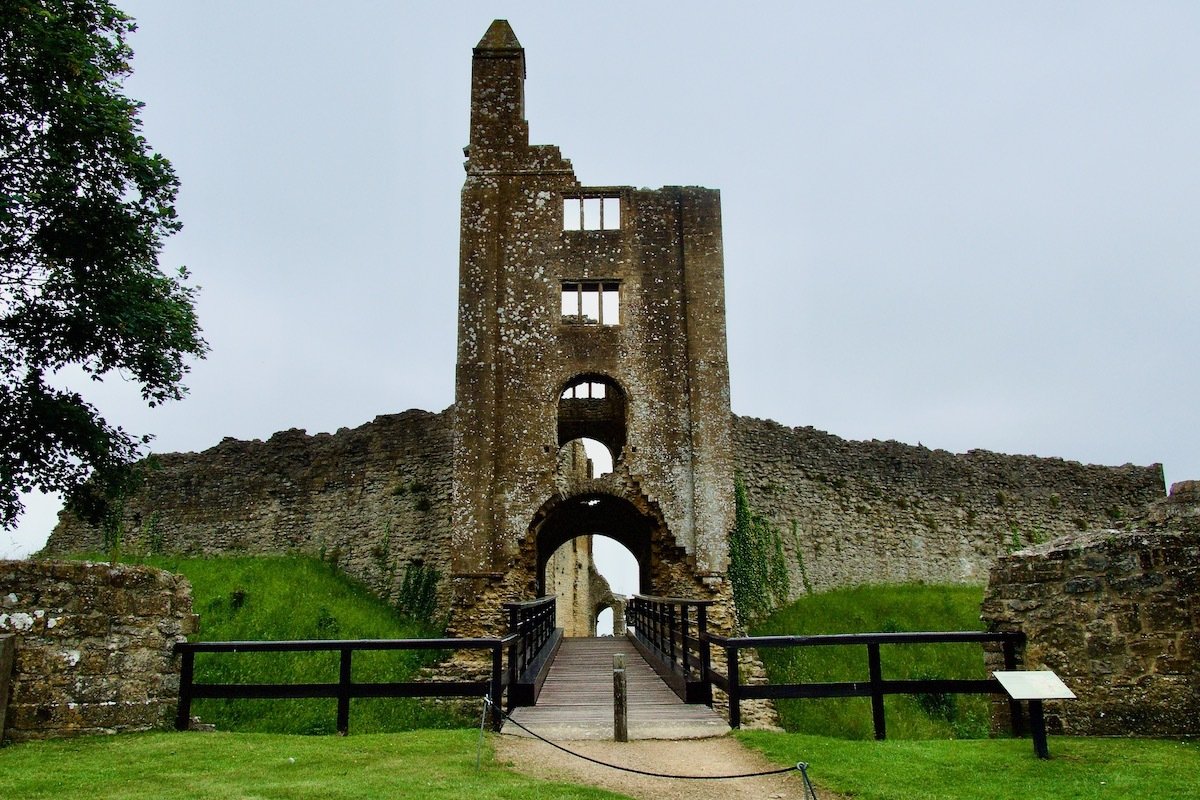
They soon discovered that a large draughty castle does not make the ideal family home. After failing to modernise it, Raleigh abandoned it, and instead converted the ruins of a Tudor hunting lodge in the Deer Park into an Elizabethan mansion. When Raleigh and his family took up residence there, they called it Fortune’s Fold. The castle was finally destroyed in 1645, during the English Civil war, and Fortune’s Fold then became known as the new Sherborne Castle.
Raleigh’s family forfeited ownership of the castle when he was found guilty of treason and executed in 1618. He had fallen out of favour when King James I succeeded to the English throne in 1603, and his fate was sealed after a failed voyage to find El Dorado in the West Indies. He had made a will leaving the estates in trust for his son so they could not be forfeited to the Crown, but the deed was rendered void by a clerical error, and King James took everything.
James gave Sherborne castle and all its estates to his friend Robert Carr. When Carr died in 1645, John Digby was given the castle, and his descendants still own the castle today. The ruins of the old castle were put under the guardianship of the Ministry of Works in 1950; in 2013 they became the responsibility of English Heritage, and are open to the public. The southwest gatehouse and parts including the Great Tower are all that remain of the old castle. The castle grounds are a haven for wildlife and birds, and visitors can take in beautiful views of the surrounding countryside due to the elevated position. In the summer they will also see the pretty pink flowers planted all over the estate by Raleigh’s wife – they are known as Lady Bess’s Pinks.
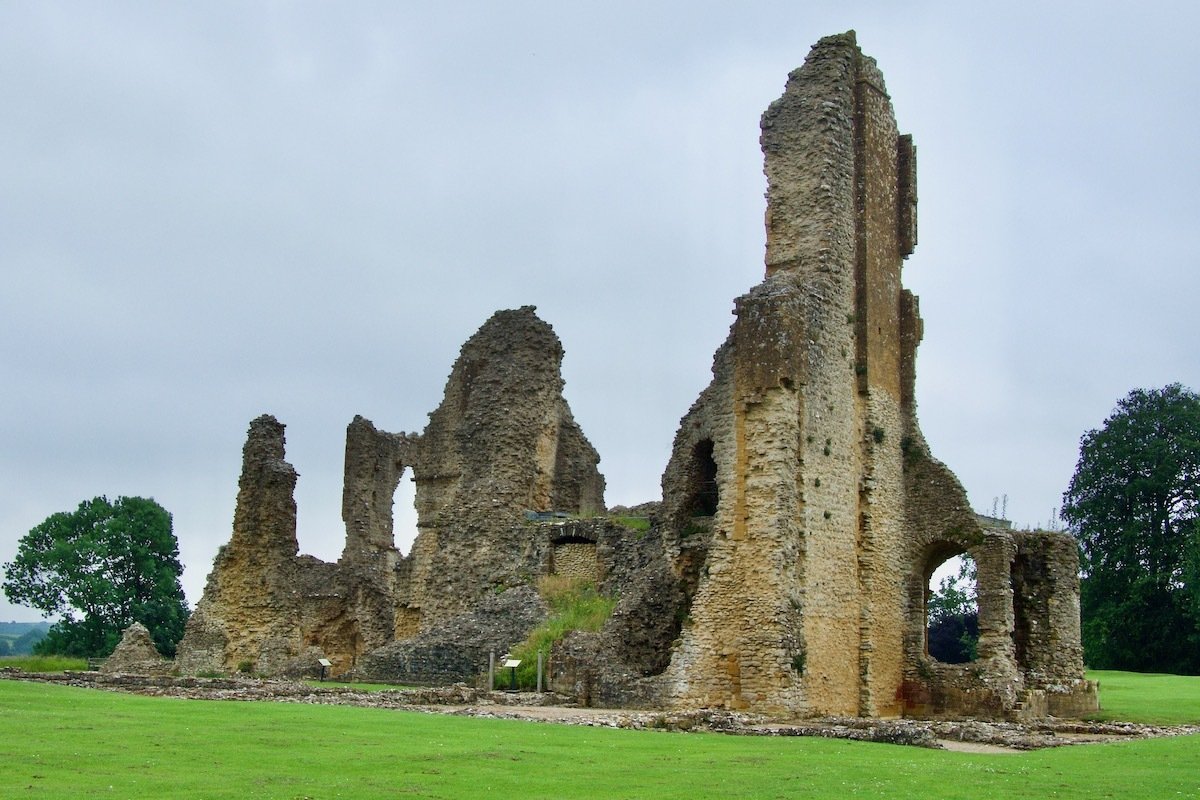
New Sherborne Castle in Sherborne, Dorset
Although the new Sherborne Castle was built in the grounds of the old one, it is not possible to walk from one to the other. This castle has been open to the public since 1969. Raleigh’s original Elizabethan mansion has been extended and modernised: Georgian sash windows, panelled doors and white marble fireplaces were added during the eighteenth century. Twenty beautifully furnished rooms reflect 400 years of English history, and house important collections of furniture, paintings and porcelain.
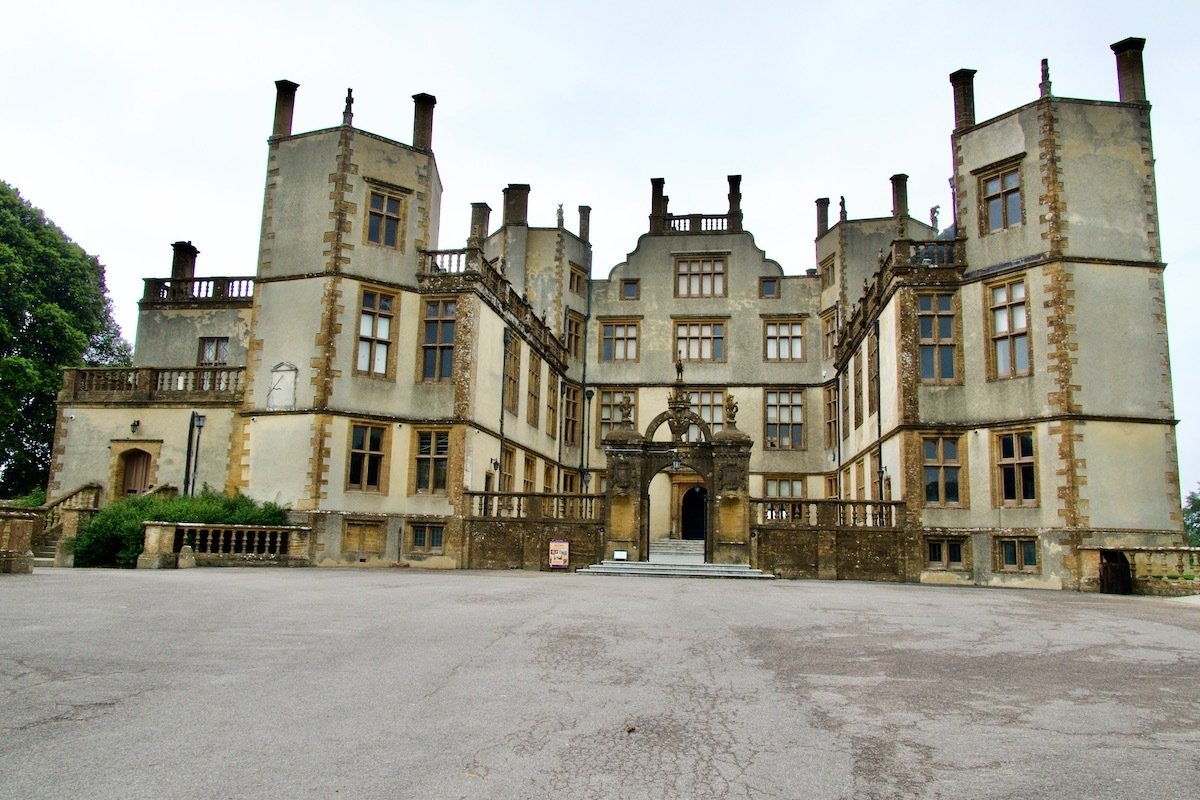
When Raleigh was in residence he created gardens and orchards in the surrounding park, and is credited with the diversion of the River Yeo into those gardens. In 1753, Capability Brown was commissioned to create a lake by damming this river, and later came back to landscape the gardens – one of his first commissions. His English landscape garden is protected as a Grade I-listed garden and the story of his work is told in the castle’s cellar museum. The gardens are also open to the public and feature two lovely walks around the lake. A very pretty fossil house was added in 1969 to celebrate 400 years’ ownership by the Digby family; it features Digbert the Ostrich, as seen on their coat of arms. The ostrich is a symbol of power and the upside-down horseshoe is draining out luck because they don’t need it. This symbol can be seen around the town on properties that are, or were, owned by the Digby family.
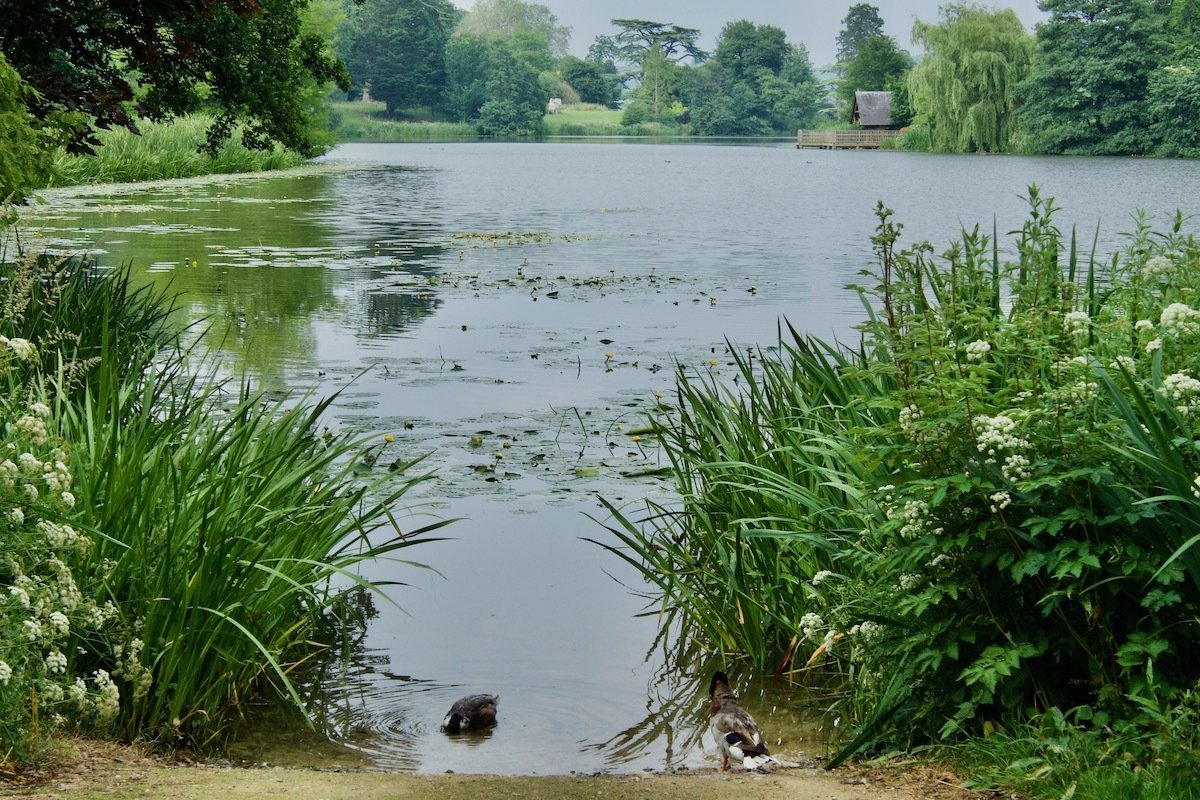
St John’s Almshouses in Sherborne, Dorset
Raleigh and his family relished living in Sherborne and became involved in local life. Raleigh intervened in a dispute involving a resident in St John’s Almshouses; this is revealed in a letter dated 1594 from Sir Walter Raleigh to the Almshouse Master. Elliner Dyer was claiming that when she was a child, the Almshouses had taken some property that was rightfully hers. Raleigh wrote to Mr Knoyll, who was Master of the Almshouse, asking that the property should be restored to her. He signed the letter “From my Castell this 28th off May, Your loving W. Ralegh.” The original letter is on display in the Almshouses. It is not known if his plea that the trustees “shold be protecters and not opressers off poor pepill” was successful.
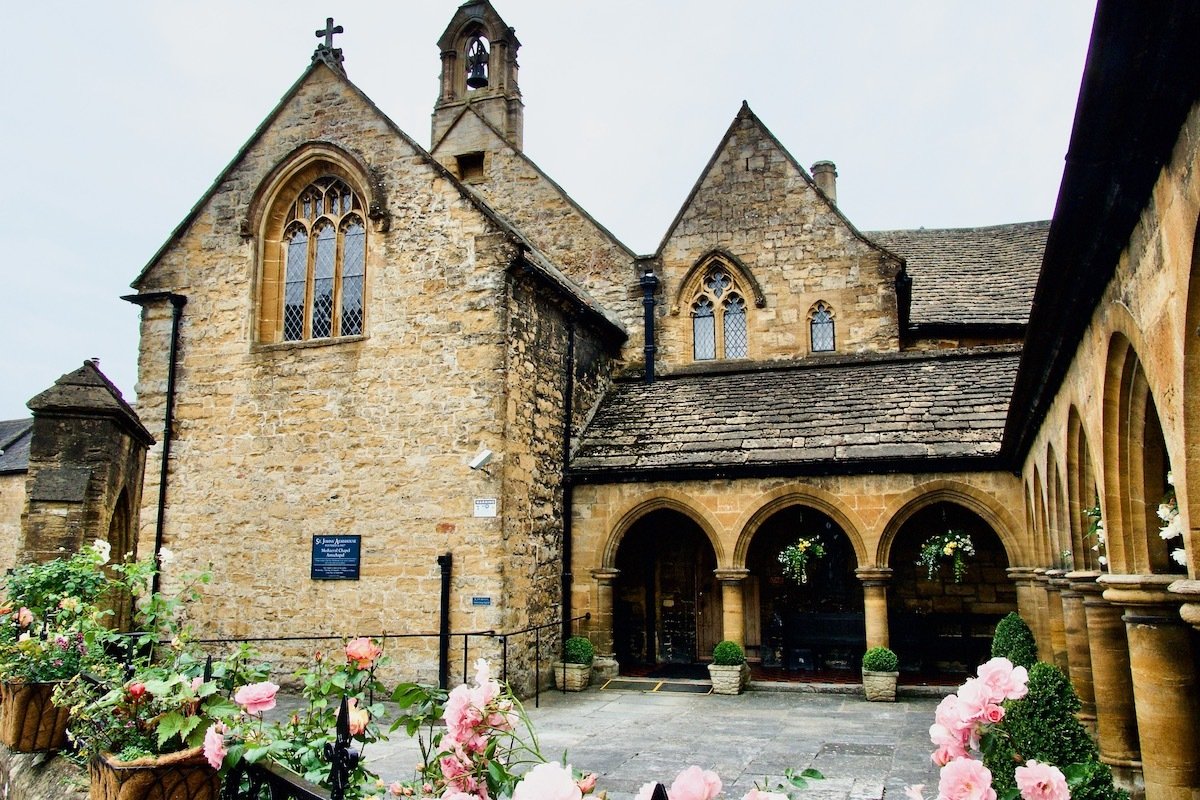
The Almshouses, built in front of Sherborne Abbey in 1448, were funded by donations from benefactors. The original building consisted of a chapel and a communal dining room on the ground floor, with bedrooms on the first floor reached by an external staircase. Initially, accommodation was provided for twelve men and five women, who were required to wear cloaks and hats. Potential residents had to donate something useful to the almshouses (in order to furnish them): this was how the Almshouses acquired the very valuable triptych of the Dutch school that is on display above the altar in the chapel. Additional almshouses and cloisters were added in Victorian times and when the new extension was added the external staircase was enclosed. Today the residents are still provided with all their meals in the communal dining room, but no longer have to wear uniforms. The chapel (which is subject to restricted opening times) is well worth a visit.
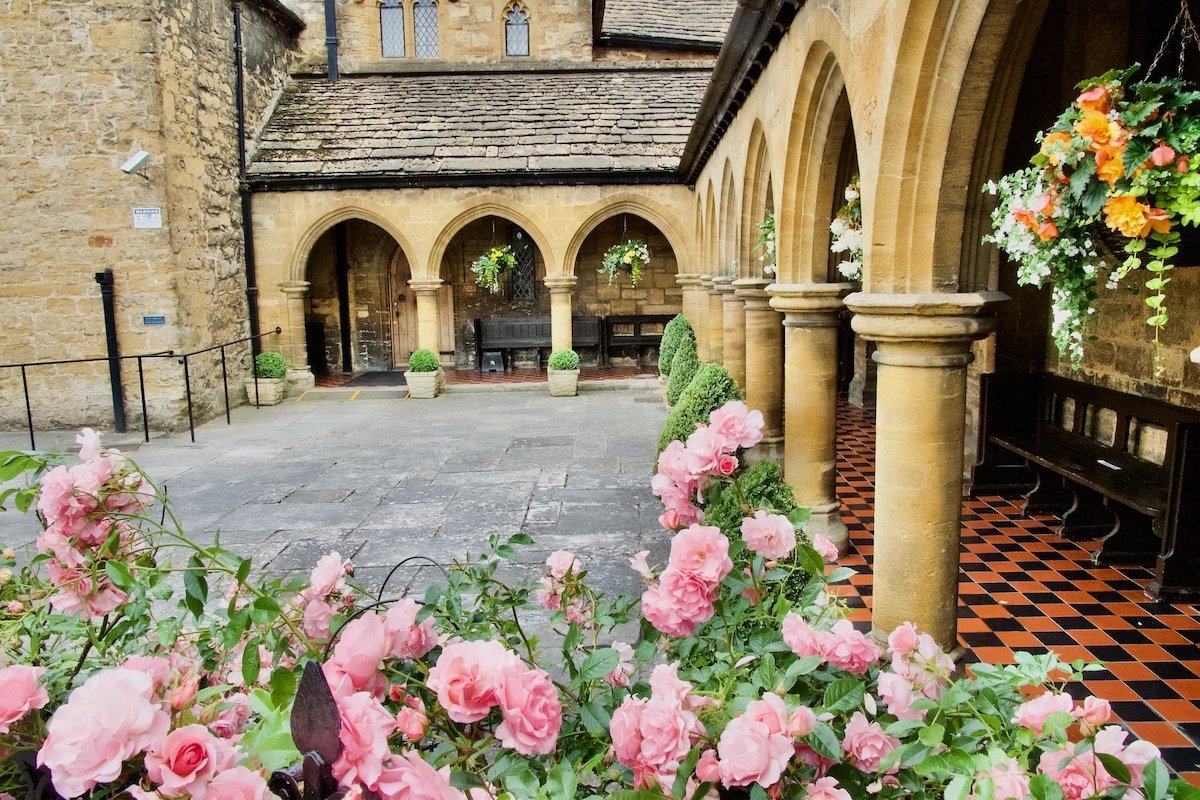
Raleigh had a favourite quiet place in the gardens of his castles: he would sit on the stone seat he built here, and watch the old road. Now known as Raleigh’s Seat, it is a fitting memorial to this colourful courtier of Queen Elizabeth I.
